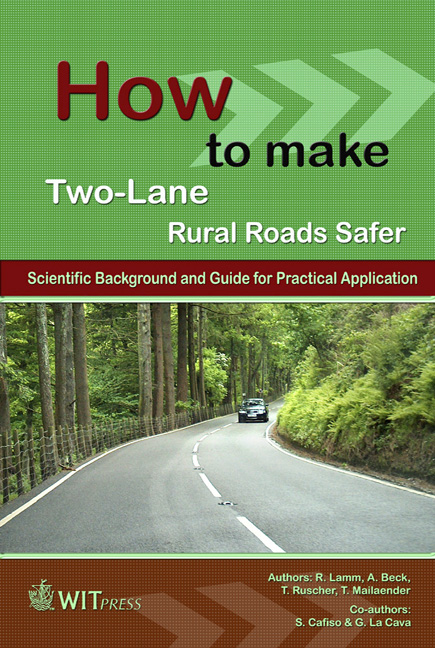How to make Two-Lane Rural Roads Safer
Scientific Background and Guide for Practical Application
Authors: R. Lamm, A. Beck and T. Ruscher, University of Karlsruhe, Germany; T. Mailaender, Mailaender Ingenieur Consult GmbH, Karlsruhe, Germany; S. Cafiso and G. La Cava, University of Catania, Italy
Price
£74.00 (free shipping)
ISBN
978-1-84564-156-6
eISBN
978-1-84564-257-0
Pages
144
Published
2007
Format
Hardback
When accidents happen, drivers are blamed for the mishap. When drivers consistently fail at certain locations, it then becomes obvious that the problem lies not with them, but with the geometry of the road itself. Because accidents are not evenly distributed throughout the road network, locations with high accident rates are a clear indication that there are other factors involved, besides driver error, which are characterized by the road itself.
In most countries, two-lane rural roads make up about 90 percent of rural networks and they account for over 60 percent of highway fatalities worldwide, approximately 500,000 people per year.
The methodology described in this book will support the achievement of quantified measures of 1) design consistency, 2) operating speed consistency, and 3) driving dynamic consistency. The safety criteria are then combined into an overall safety module for a simplified general overview of the safety evaluation process. The authors also encourage the coordination of safety concerns with important economic, environmental and aesthetic considerations.
This book will be an invaluable aid to educators, students, consultants, highway engineers and administrators, as well as scientists in the fields of highway design and traffic safety engineering.





